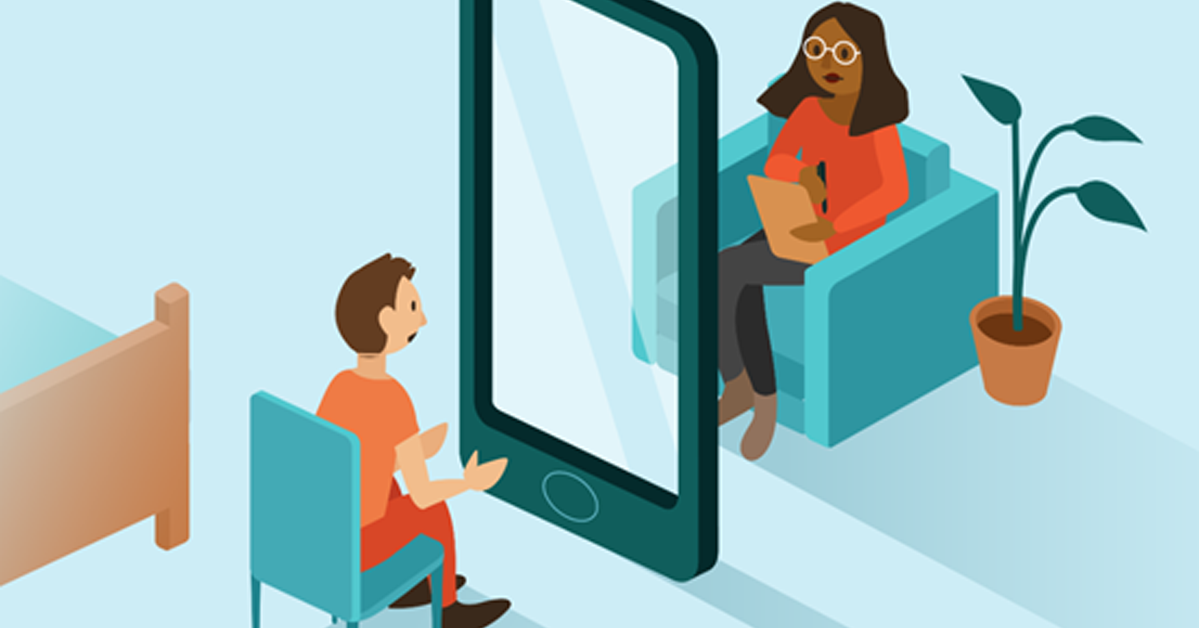Did you know that people who try virtual therapy are 16% more likely to stick with it compared to in-person sessions? It makes sense—life is busy, and finding time for therapy can be tough. But with virtual therapy, you can talk to a licensed professional from home, on your schedule, without the hassle of travel.
More and more people are choosing online therapy because it’s affordable, private, and easy to access—especially for those in remote areas or with tight schedules. If you’ve ever thought about trying therapy but felt overwhelmed by the process, virtual therapy could be the perfect solution. Let’s explore why it’s changing the future of healthcare.
What is Virtual Therapy?
Virtual therapy refers to mental health treatment conducted via video calls, phone sessions, or chat platforms. This method offers a flexible and convenient alternative to traditional in-person therapy, allowing individuals to connect with therapists from the comfort of their homes. Research indicates that virtual therapy’s can be as effective as face-to-face sessions, with studies showing a 16% higher completion rate for online therapy programs.
Key Features of Virtual Therapy
- Accessibility: Patients can access therapy from anywhere with an internet connection.
- Variety of Formats: Options include video conferencing, phone calls, and text-based therapy.
- Secure Platforms: Many services use encrypted communication tools to ensure confidentiality.
Benefits of Virtual Therapy
1. Increased Accessibility
One of the most significant advantages of virtual therapy is its ability to eliminate geographical barriers. Individuals living in rural or underserved areas often struggle to find qualified mental health professionals nearby. Virtual therapy’s bridges this gap by allowing patients to connect with therapists regardless of location. This accessibility is crucial for those who may have limited local resources or who face mobility challenges.
2. Convenience and Flexibility
In today’s fast-paced world, finding time for therapy can be challenging. Virtual therapy offers unparalleled convenience by allowing individuals to schedule sessions that fit into their busy lives. Whether it’s during a lunch break, after work, or even on weekends, patients can choose times that work best for them. Additionally, the elimination of travel time means that individuals are less likely to miss appointments due to unforeseen circumstances like traffic or bad weather.
3. Enhanced Privacy and Comfort
For many people, the thought of attending therapy in person can be intimidating. Virtual therapy provides a sense of privacy and comfort that can make it easier for individuals to open up about their struggles. By attending sessions from their own homes or other familiar environments, patients often feel more at ease, which can lead to more productive therapeutic experiences.
4. Cost-Effectiveness
The financial aspect of mental health care can be a significant barrier for many individuals seeking help. Traditional therapy often involves costs related to travel, parking, and time off work—expenses that can quickly add up. Virtual therapy typically reduces these costs, making it a more affordable option for many people. Additionally, many online platforms offer competitive pricing for sessions compared to traditional in-person visits.
5. Wider Therapist Options
In conventional therapy settings, patients are often limited by their geographical location when choosing a therapist. Virtual therapy opens up a wider range of options, allowing individuals to find professionals who specialize in their specific needs or preferences—whether that’s anxiety management, depression treatment, or trauma recovery. This increased choice empowers patients to select therapists who resonate with them on a personal level.
6. Breaking Down Social Stigmas
Despite growing awareness around mental health issues, stigma still exists around seeking help. Many individuals fear judgment from others when attending in-person sessions. Virtual therapy helps dismantle these stigmas by providing a level of anonymity and privacy that traditional settings may not offer. Patients can engage in therapy without the worry of running into someone they know on their way to an appointment.
7. Accessibility for People with Disabilities
For individuals with disabilities or mobility challenges, accessing traditional therapy can be particularly difficult. Virtual therapy removes these physical barriers by allowing patients to receive care from home or any location where they feel comfortable. This inclusivity is essential in ensuring that everyone has access to the mental health support they need.
8. Multilingual Therapy Access
Language barriers can pose significant challenges in accessing mental health care for non-native speakers. Virtual therapy platforms often provide options for multilingual therapists, making it easier for individuals to communicate effectively with their providers. This accessibility ensures that cultural nuances are respected and understood during treatment.
9. Flexibility in Therapy Formats
Virtual therapy’s offers various formats tailored to individual preferences—whether through video calls, phone sessions, or text-based communication. This flexibility allows patients to choose the method that feels most comfortable for them, enhancing their overall experience and engagement in the therapeutic process.
10. Improved Continuity of Careinternet
Consistency is vital in any therapeutic journey. Virtual therapy facilitates regular check-ins and follow-up sessions without interruptions caused by travel or scheduling conflicts. This continuity helps maintain momentum in treatment and fosters better long-term outcomes for patients.
Challenges and Solutions
While virtual therapy presents numerous benefits, it also comes with its own set of challenges:
- Technology Issues: Poor internet connections or unfamiliarity with digital platforms can disrupt sessions.
- Digital Literacy: Some individuals may struggle with navigating online tools necessary for virtual therapy.
However, many platforms now offer technical support and user-friendly interfaces designed to make the process as seamless as possible. As technology continues to evolve and become more integrated into our daily lives, these challenges are likely to diminish over time.
Conclusion
Virtual therapy represents a revolutionary shift in how we approach mental health care today. By removing barriers related to geography, cost, and stigma, it ensures that quality mental health support is accessible to everyone—regardless of their circumstances.
As technology advances and acceptance grows within society, virtual therapy will undoubtedly play an increasingly vital role in promoting mental well-being across diverse populations.











